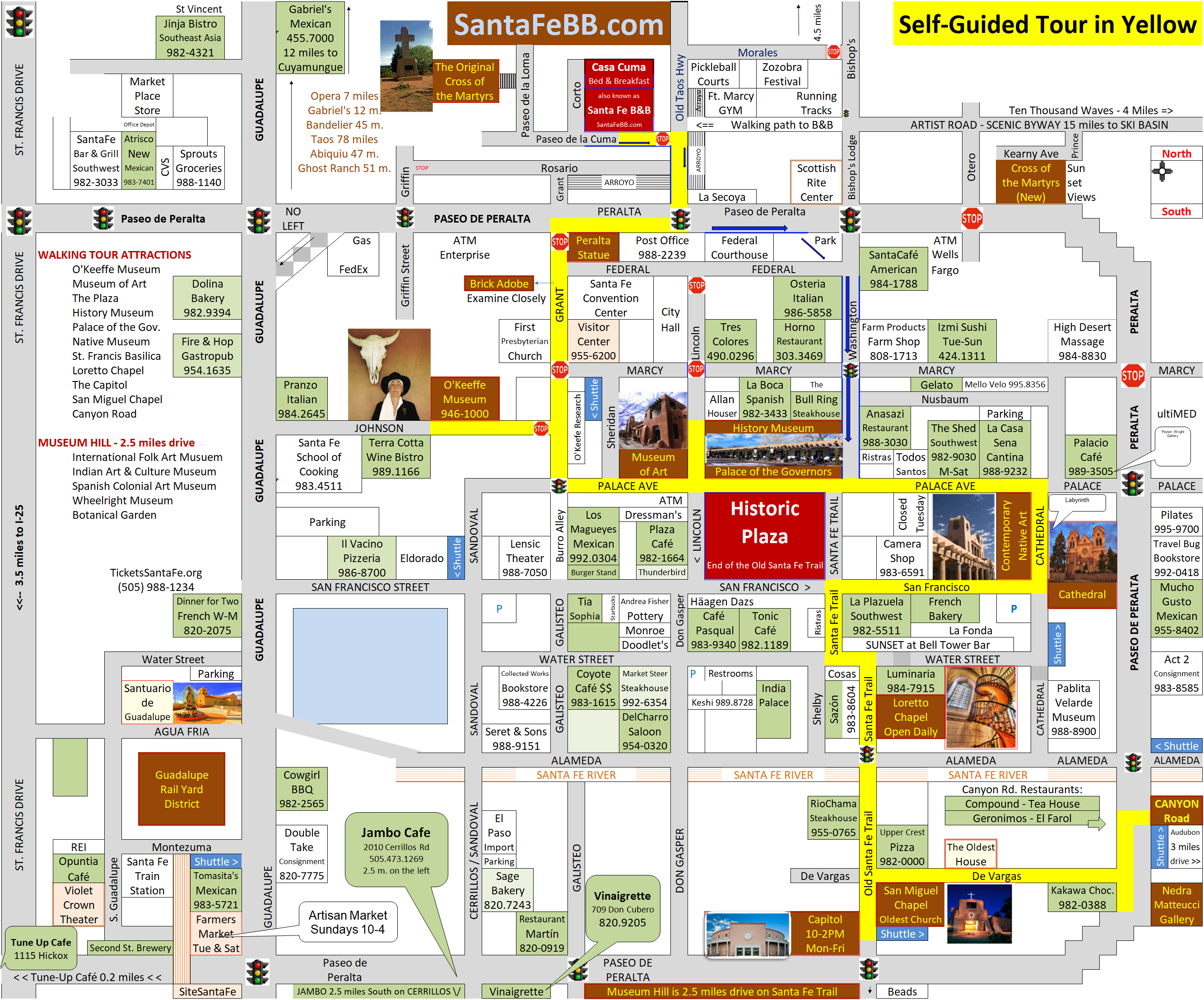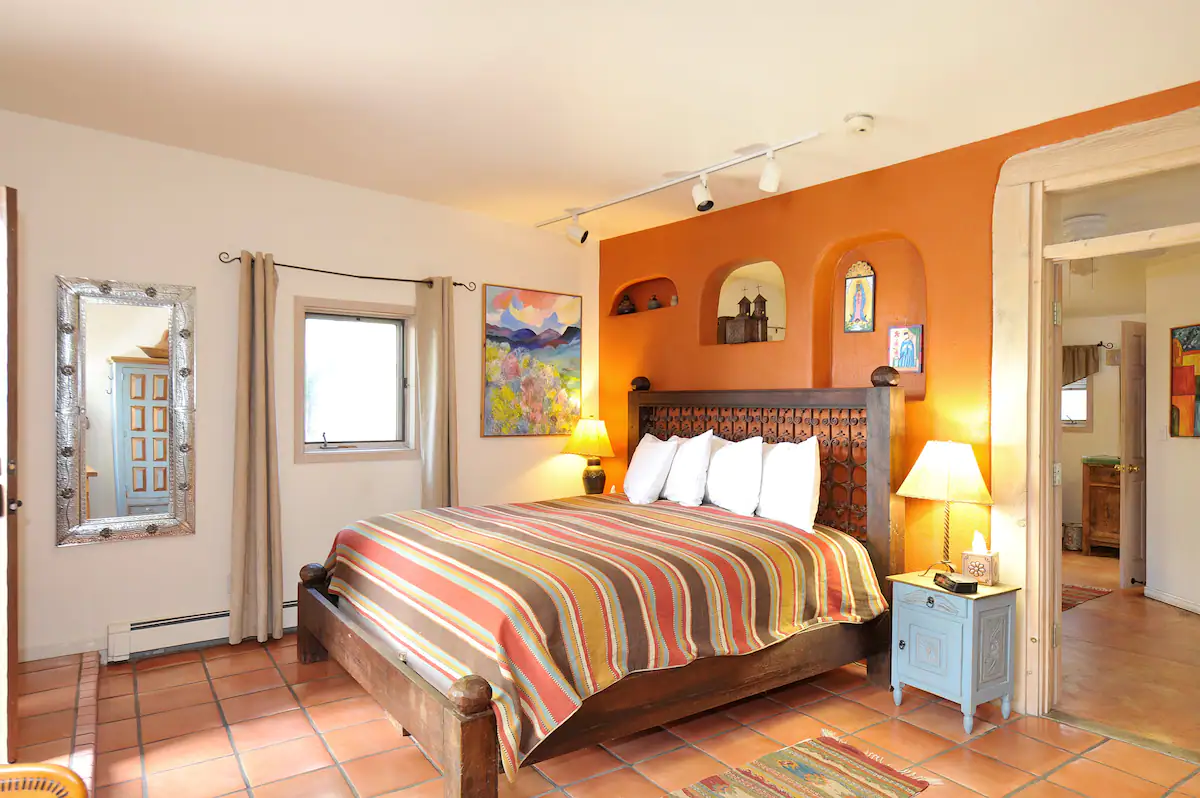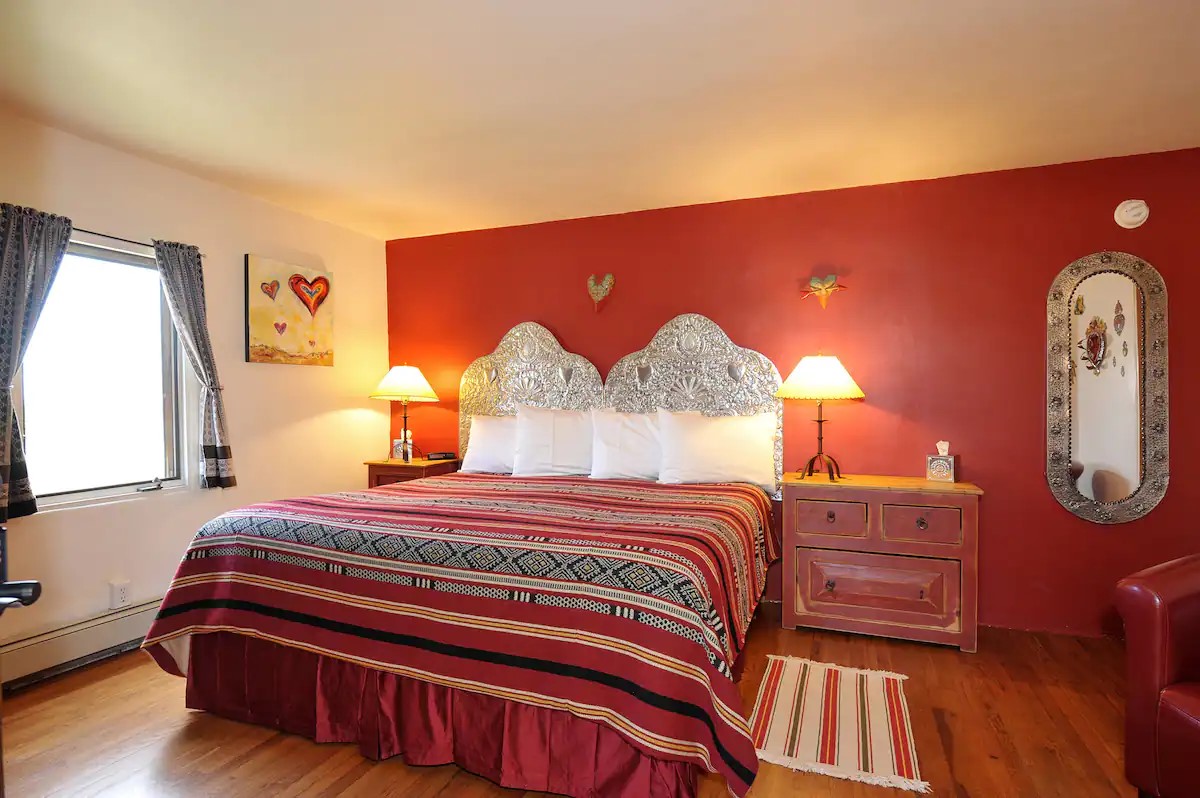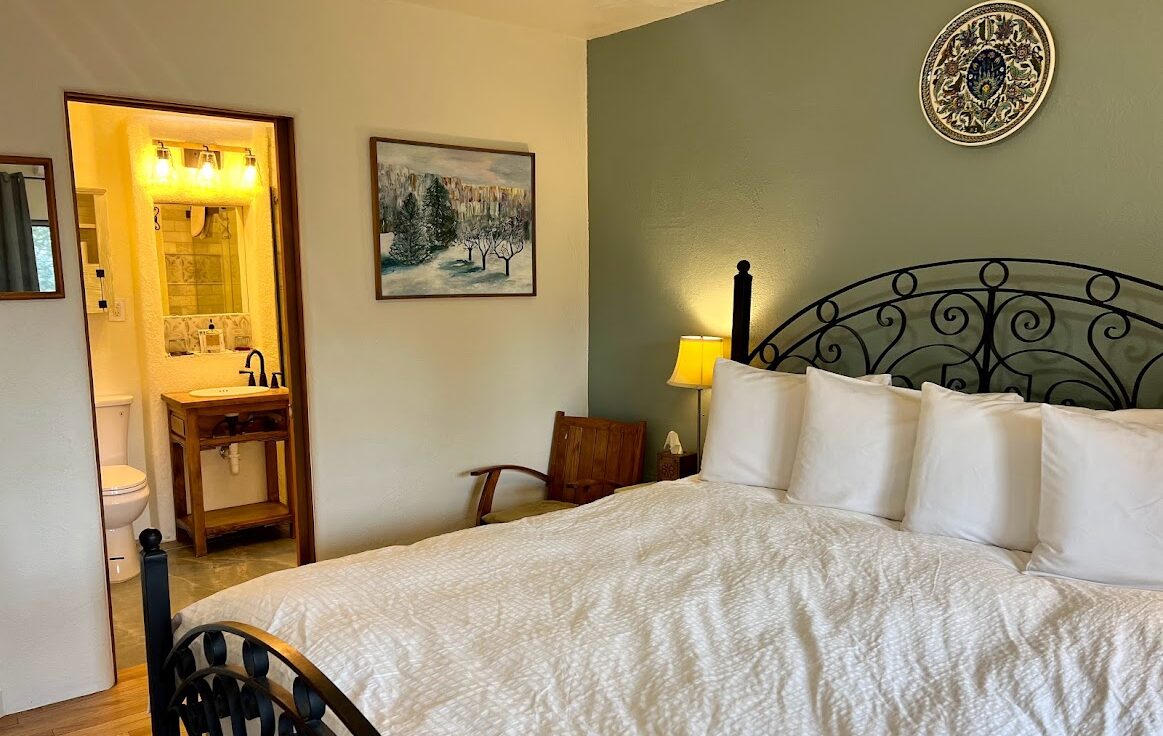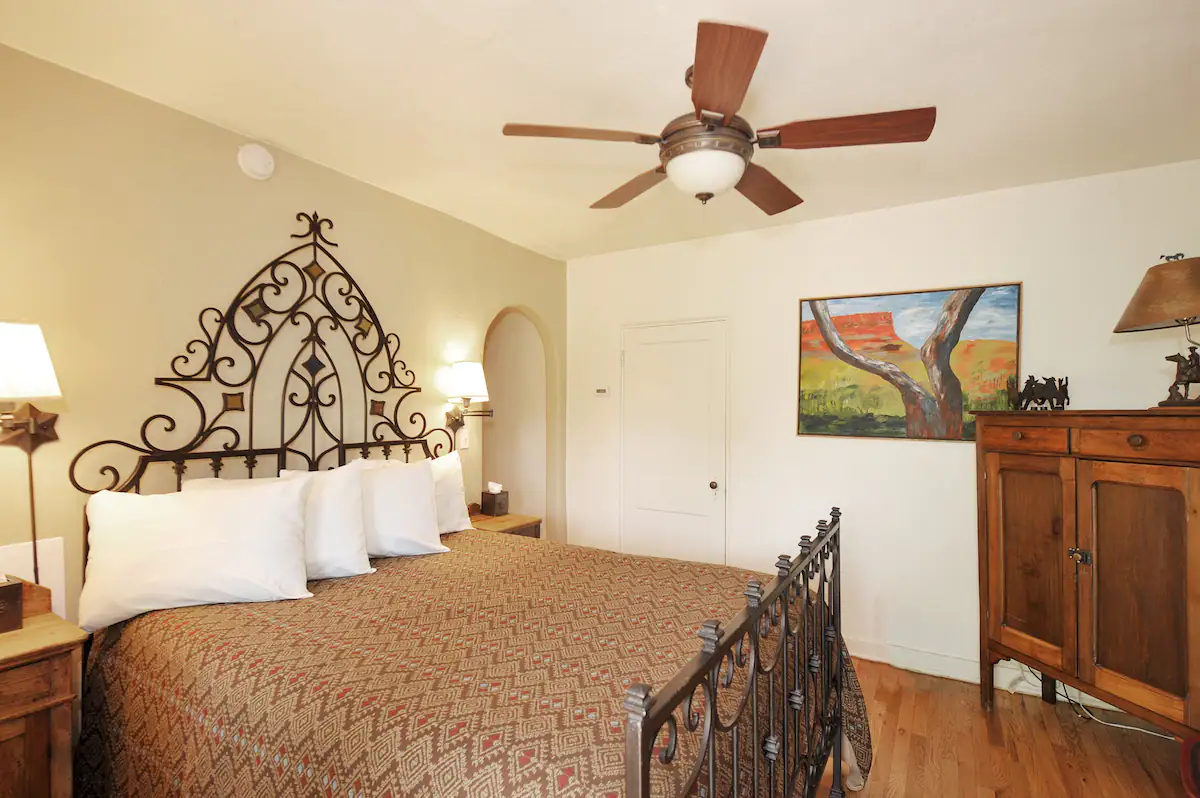Self-Guided Walking Tour
Jumpstart your day with a self-guided walking tour of the Historic Plaza area starting from the B&B. Here are the Top 10 attractions (pick up a customized map before you leave the B&B):
O’Keeffe Museum
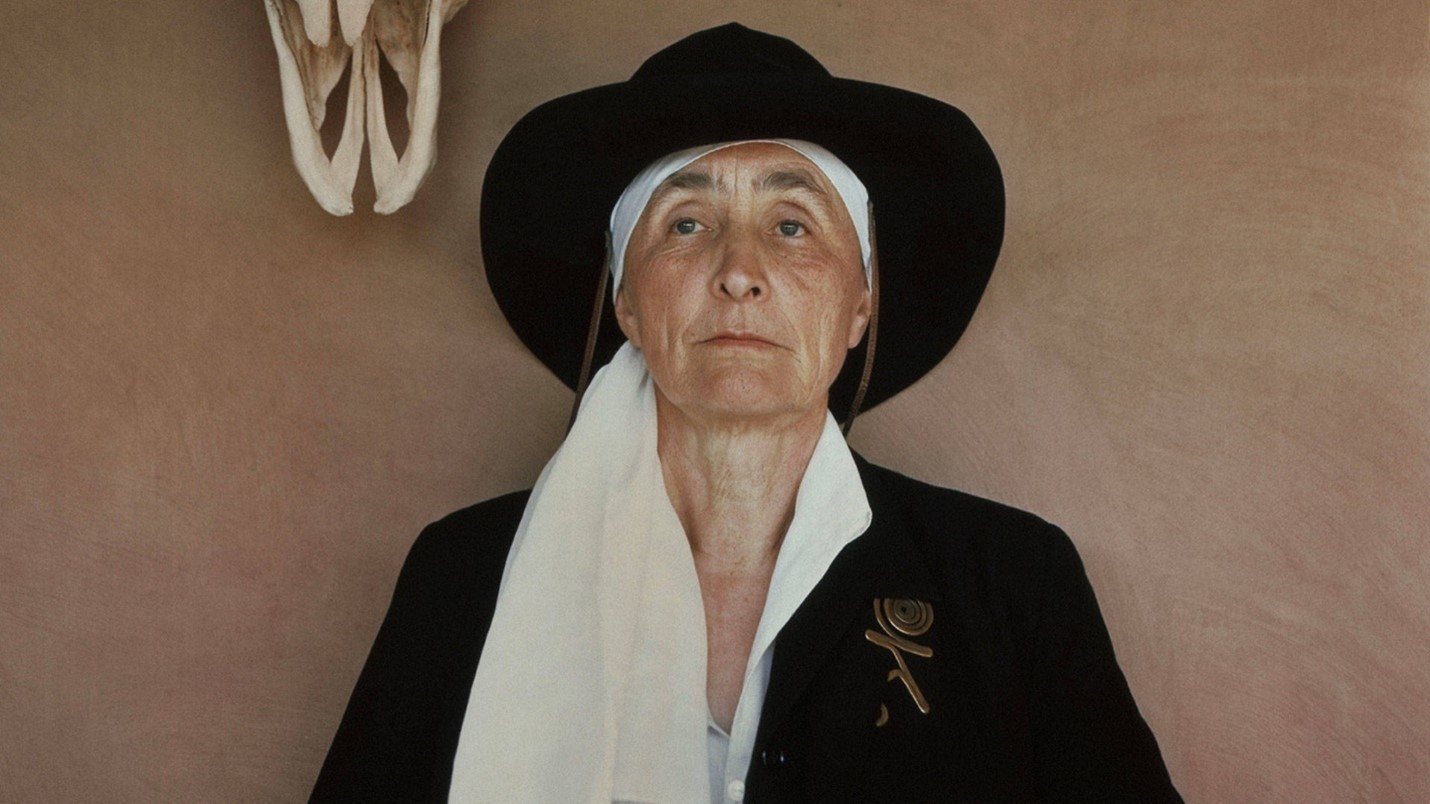
As an artist of national standing, Georgia O’Keeffe has been well known in America for many decades. More recently, her art has begun to attract similar attention and accolades abroad. The Georgia O’Keeffe Museum’s collections include nearly 150 paintings and hundreds of works on paper (pencil and charcoal drawings, as well as pastels and watercolors). The collections also include personal property, from rocks and bones to dresses and paintbrushes, and a significant archive of documents and photographs relating to the artist’s life and times.
O’Keefe Museum houses the largest collection of Georgia O’Keeffe works. We recommend you start by seeing the two documentaries, one of them is narrated by Santa Fe’s own Gene Hackman. The Georgia O’Keeffe Museum in Santa Fe, New Mexico, opened to the public in July 1997, with the goals of honoring and perpetuating Georgia O’Keeffe’s (1887–1986) artistic legacy and exploring her role in the development of the art of her time. When the Museum opened, its collection of 116 works included 94 by O’Keeffe, the largest group of works by the artist in any museum in the world.
New Mexico Art Museum

New Mexico Museum of Art has works by many famed 20th-century artists. The building is a pueblo revival-style. Docent tour recommended. New Mexico Art Tells New Mexico History is a journey through the New Mexico Museum of Art’s rich collection of paintings, prints, sculptures and photographs bringing our state’s artistic heritage to you, the owners of these works—students, teachers, families, and art and history lovers. We have selected images highlighting New Mexico’s history and cultural traditions from pre-Conquest to our present day. The four Themes shown below offer you a view into the life and times of New Mexico and New Mexicans as our state grew and developed.
THE PLAZA
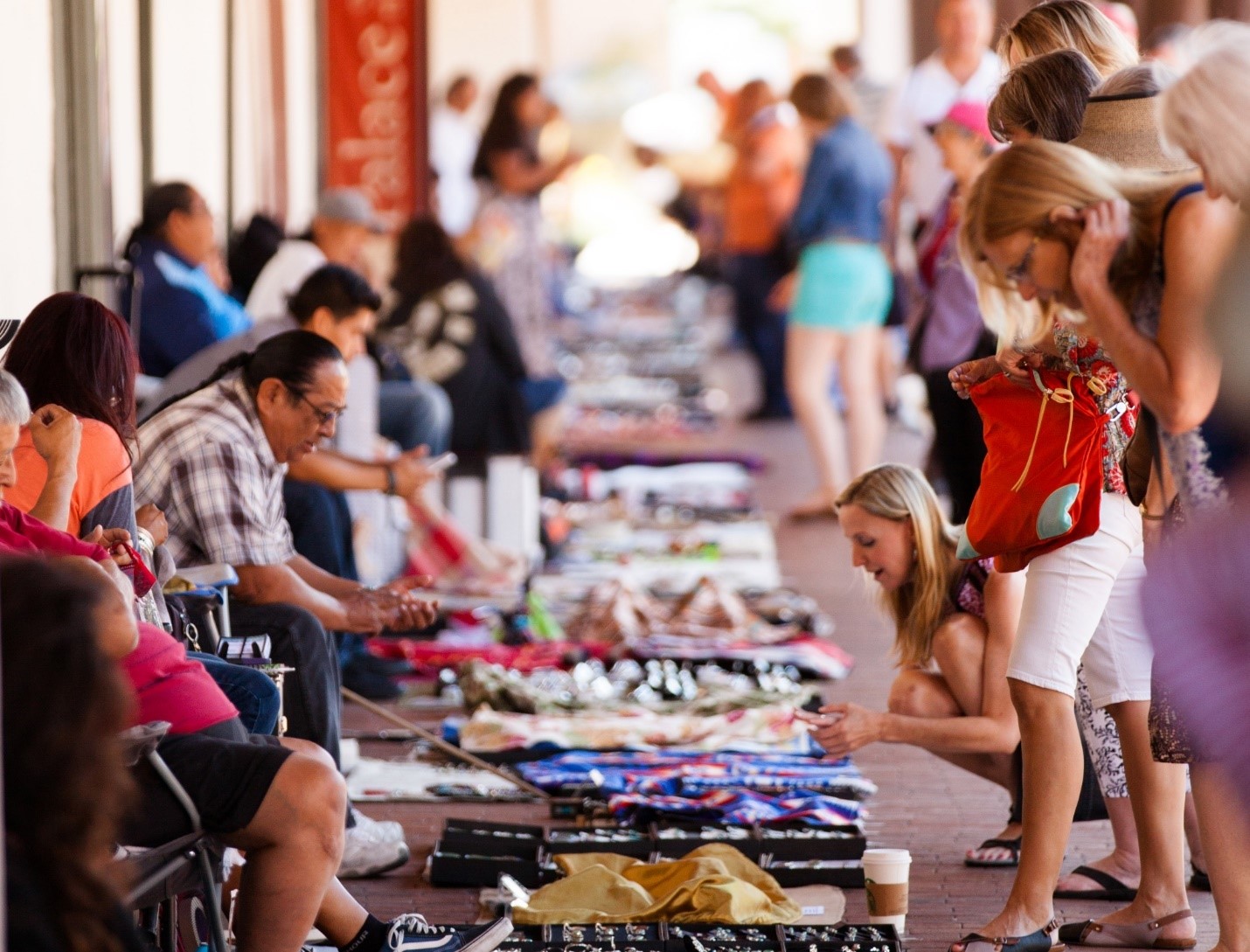
The Plaza is the heart of Santa Fe. It is also “End of the Santa Fe Trail”. Santa Fe Plaza has been the commercial, social and political center of Santa Fe since c. 1610 when it was established by Don Pedro de Peralta. The original Plaza was a presidio (fort) surrounded by a large defensive wall that enclosed residences, barracks, a chapel, a prison and the Governor’s palace. Eventually the wall gave way to large houses built by high-ranking Spanish officers and officials. In 1822 the famed Santa Fe Trail, a trade route from New Mexico to St. Louis, was opened with its terminus in the Plaza. Today the Plaza is ringed by structures in the Pueblo, Spanish and Territorial styles that reflect its diverse history. Among the most noted are the original palacio, the Palace of the Governors, built between 1610 and 1612 and San Miguel Mission, a noted landmark c. 1640, and one of the oldest churches in the United States.
New Mexico History Museum & The Palace of the Governors
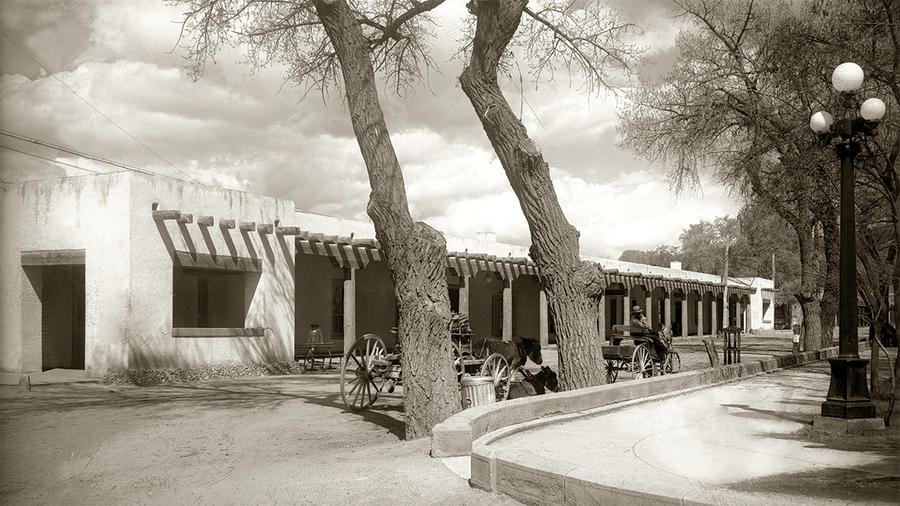
New Mexico History Museum and the Palace of the Governors are on the north side of the Plaza. Take a quick walk-through an amazing New Mexico history. Telling New Mexico: Stories from Then and Now, the main exhibition of the New Mexico History Museum, sweeps across more than 500 years of stories – from early Native inhabitants to today’s residents – with stories told through artifacts, films, photographs, computer interactive, oral histories and more. Together, they breathe life into the people who made the American West: Native Americans, Spanish colonists, Mexican traders, Santa Fe Trail riders, fur trappers, outlaws, railroad men, scientists, hippies and artists. The exhibit is divided into six sections representing chronological periods from the pre-colonial era to the present. Each is set apart by time frames and contrasting views from first-person accounts of the people who lived during the different periods.
Museum of Contemporary Native Arts

The best place to see the contemporary Native American art in Santa Fe. The Museum of Contemporary Native Arts (MoCNA), a center of the Institute of American Indian Arts (IAIA), is dedicated to increasing public understanding and appreciation of/for contemporary Native art, history and culture through presentation, collection/acquisition, preservation, and interpretation. The MoCNA is recognized as the pre-eminent organizer of exhibitions devoted exclusively to the display of dynamic and diverse arts practices representative of Native North America.
Cathedral Basilica of St. Francis of Assisi
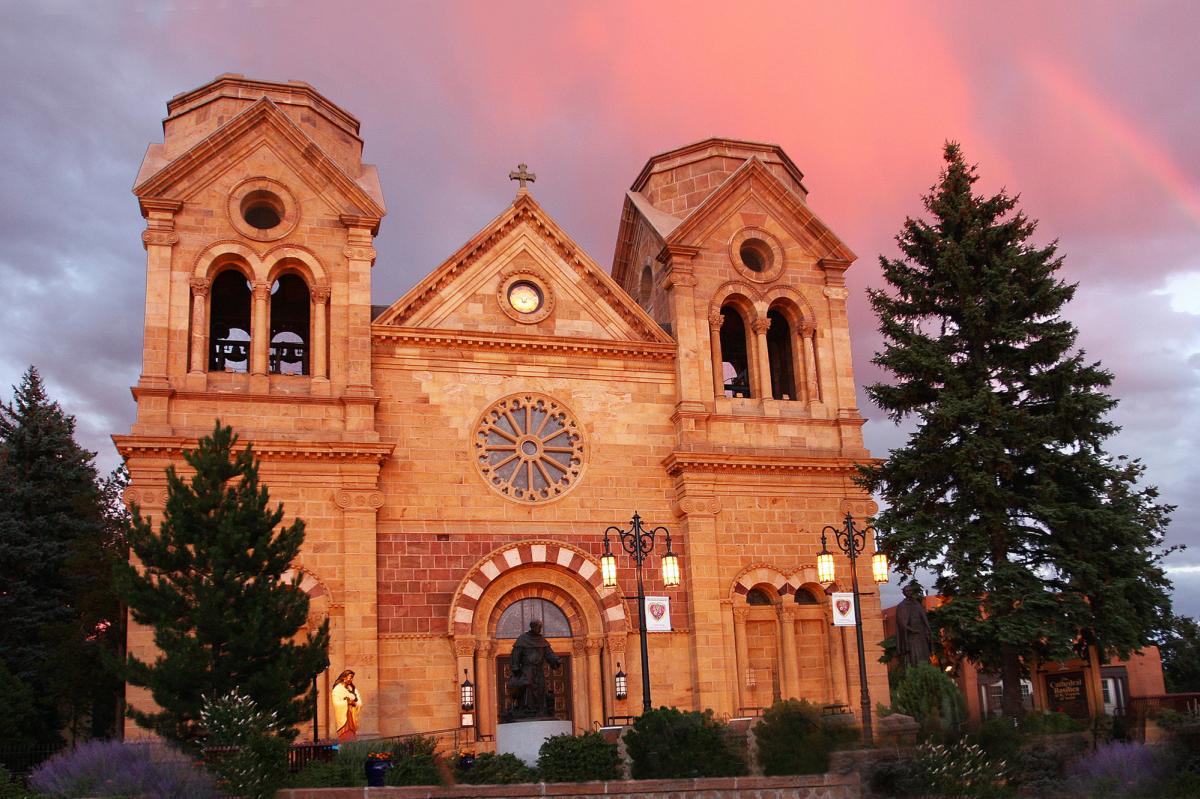
If you’re an architecture buff, take some time to check out the Cathedral Basilica of St. Francis of Assisi. Located a block east of the Santa Fe Plaza, this breathtaking Romanesque cathedral stands out among the city’s adobe skyline. Constructed beginning in 1869, the cathedral’s main purpose was to help bring Catholicism to the Southwest. Sitting next to the cathedral is the small adobe chapel – all that remains of a previous church that was destroyed during the 1680 Pueblo Revolt – which contains the oldest representation of the Virgin Mary in the United States.
Built in Romanesque style between 1869 and 1886 by Archbishop Lamy, modeled after a church from his hometown in France. It has a 17th-century wooden Madonna known as Our Lady of Peace.
Loretto Chapel
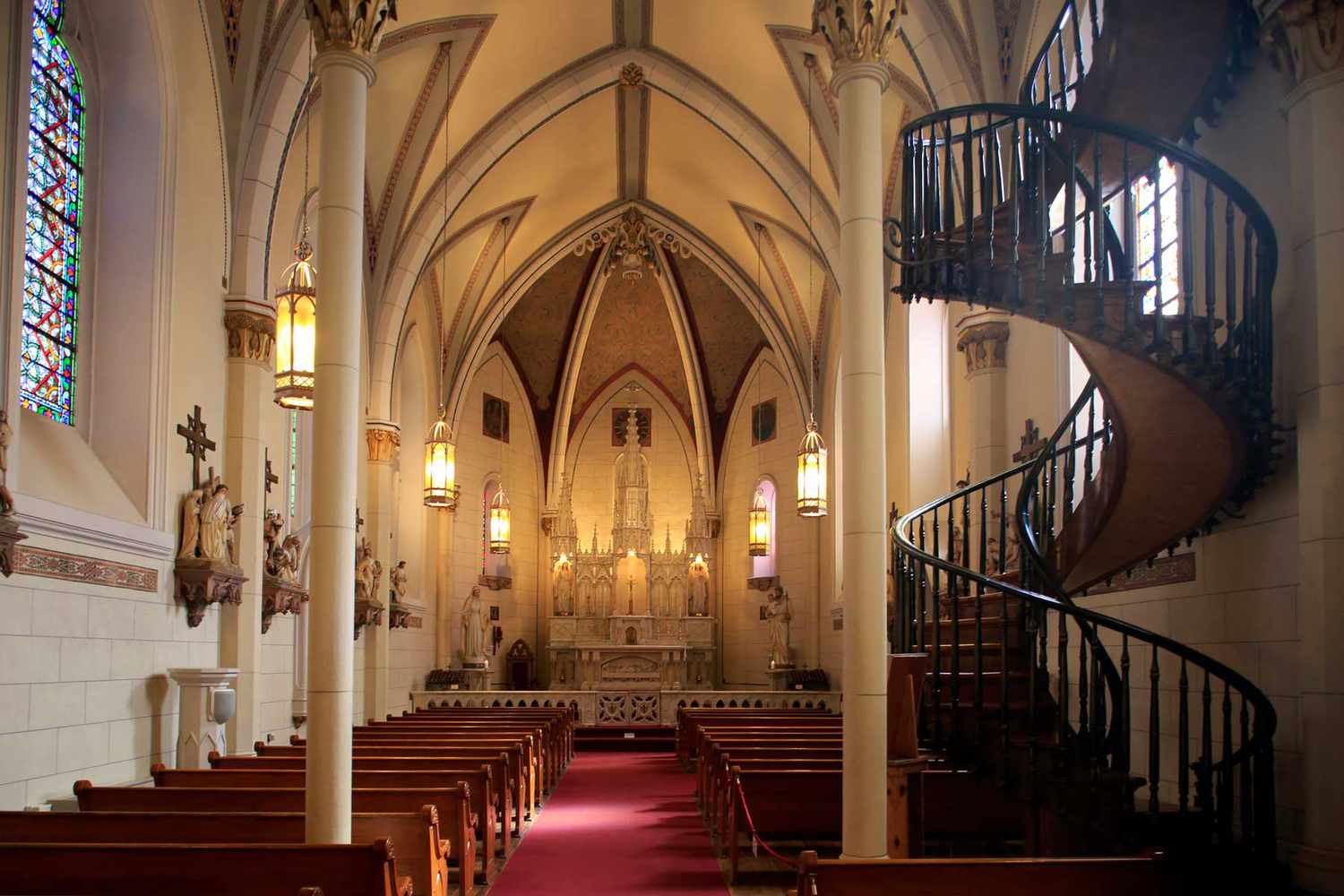
Built for the Sisters of Loretto, it is famous for its spiral staircase, which has no central support. Although it was built on a much smaller scale, the chapel bears a resemblance to the Sainte-Chapelle in Paris. Two mysteries surround the spiral staircase in the Loretto Chapel: the identity of its builder and the physics of its construction. When the Loretto Chapel was completed in 1878, there was no way to access the choir loft twenty-two feet above. Carpenters were called in to address the problem, but they all concluded access to the loft would have to be via ladder as a staircase would interfere with the interior space of the small Chapel. Legend says that to find a solution to the seating problem, the Sisters of the Chapel made a novena to St. Joseph, the patron saint of carpenters. On the ninth and final day of prayer, a man appeared at the Chapel with a donkey and a toolbox looking for work. Months later, the elegant circular staircase was completed, and the carpenter disappeared without pay or thanks. After searching for the man (an ad even ran in the local newspaper) and finding no trace of him, some concluded that he was St. Joseph himself, having come in answer to the sisters’ prayers. Over the years many have flocked to the Loretto Chapel to see the Miraculous Staircase. The staircase has been the subject of many articles, TV specials, and movies including “Unsolved Mysteries” and the television movie titled “The Staircase.”
Roundhouse (The Capitol)

A free visit to the art collection of the Capitol is one of the best kept secrets of Santa Fe. With more than 700 pieces of art, the capitol is the largest gallery in Santa Fe. Call (505) 986-4589 to schedule a tour.
San Miguel Chapel
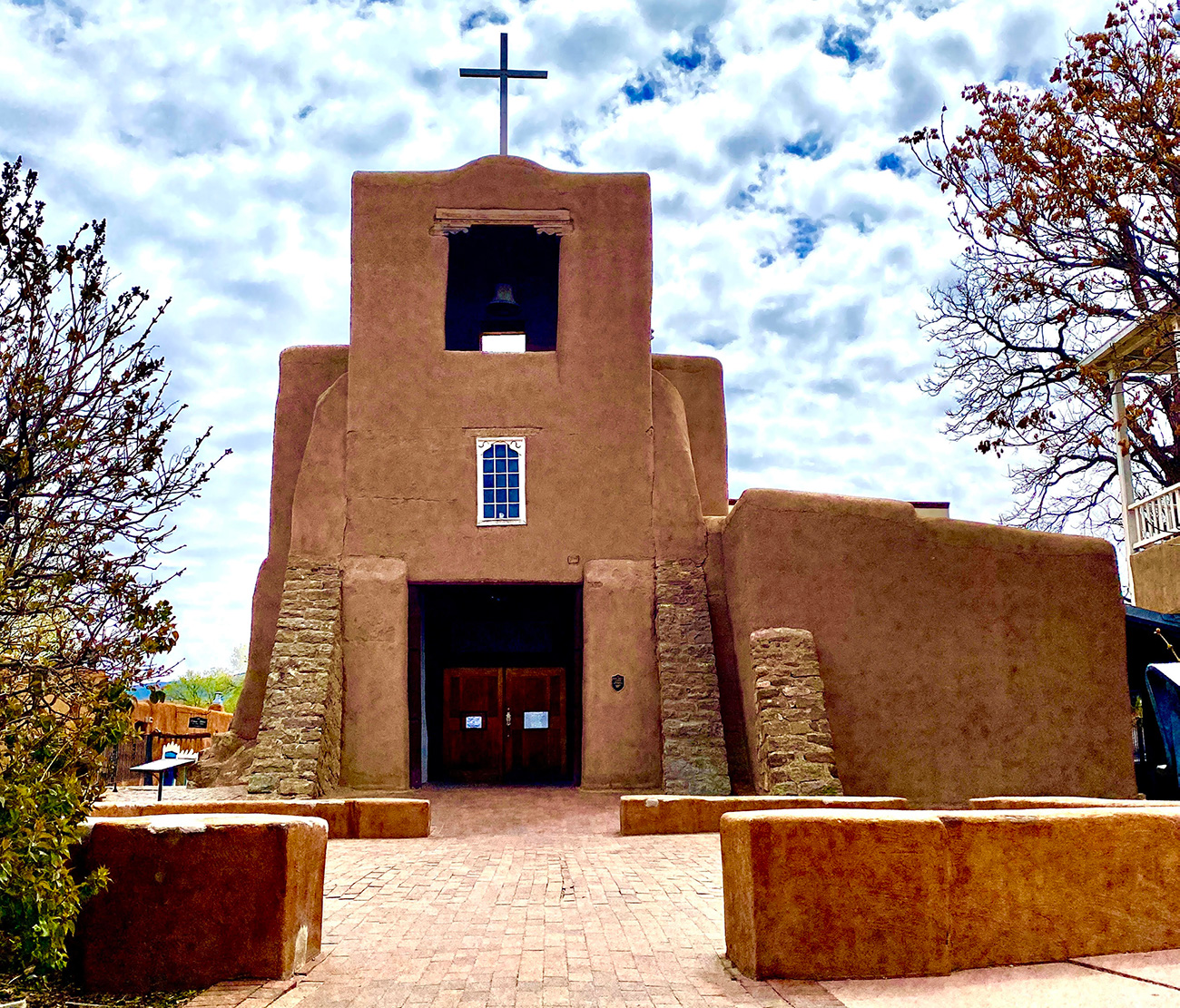
Built around 1612, this ranks as one of the oldest churches in the United States. San Miguel Mission, also known as San Miguel Chapel, is a Spanish colonial mission church in Santa Fe, New Mexico. Built between approximately 1610 and 1626, it is claimed to be the oldest church in the United States. The church was damaged during the Pueblo Revolt of 1680 but was rebuilt in 1710 following the Spanish re-conquest and served for a time as a chapel for the Spanish soldiers. The wooden reredos, which includes a wooden statue of Saint Michael dating back to at least 1709, was added in 1798. Though the church has been repaired and rebuilt numerous times over the years, its original adobe walls are still largely intact despite having been hidden by later additions. The church is a contributing property in the Barrio De Analco Historic District, which is a U.S. National Historic Landmark. If you have a bit more time, visit the Oldest House on de Vargas Street.
CANYON ROAD
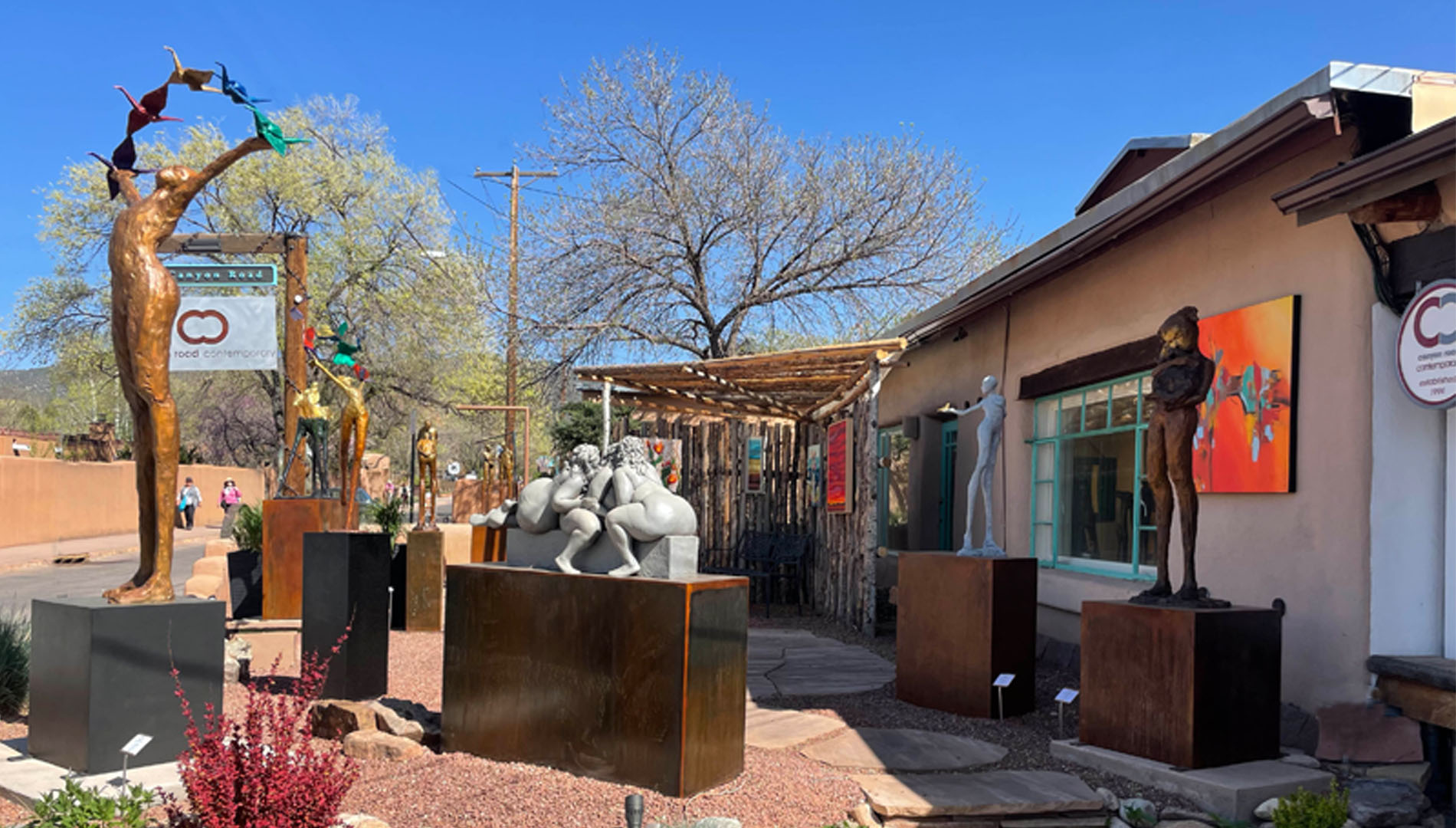
Canyon road has been referred to as the largest museum in the world with more than 100 galleries. Yes, it has more art work than the Louvre in Paris. Please remember to visit our favorite Canyon Road Contemporary Art gallery.
More things to do . . .
